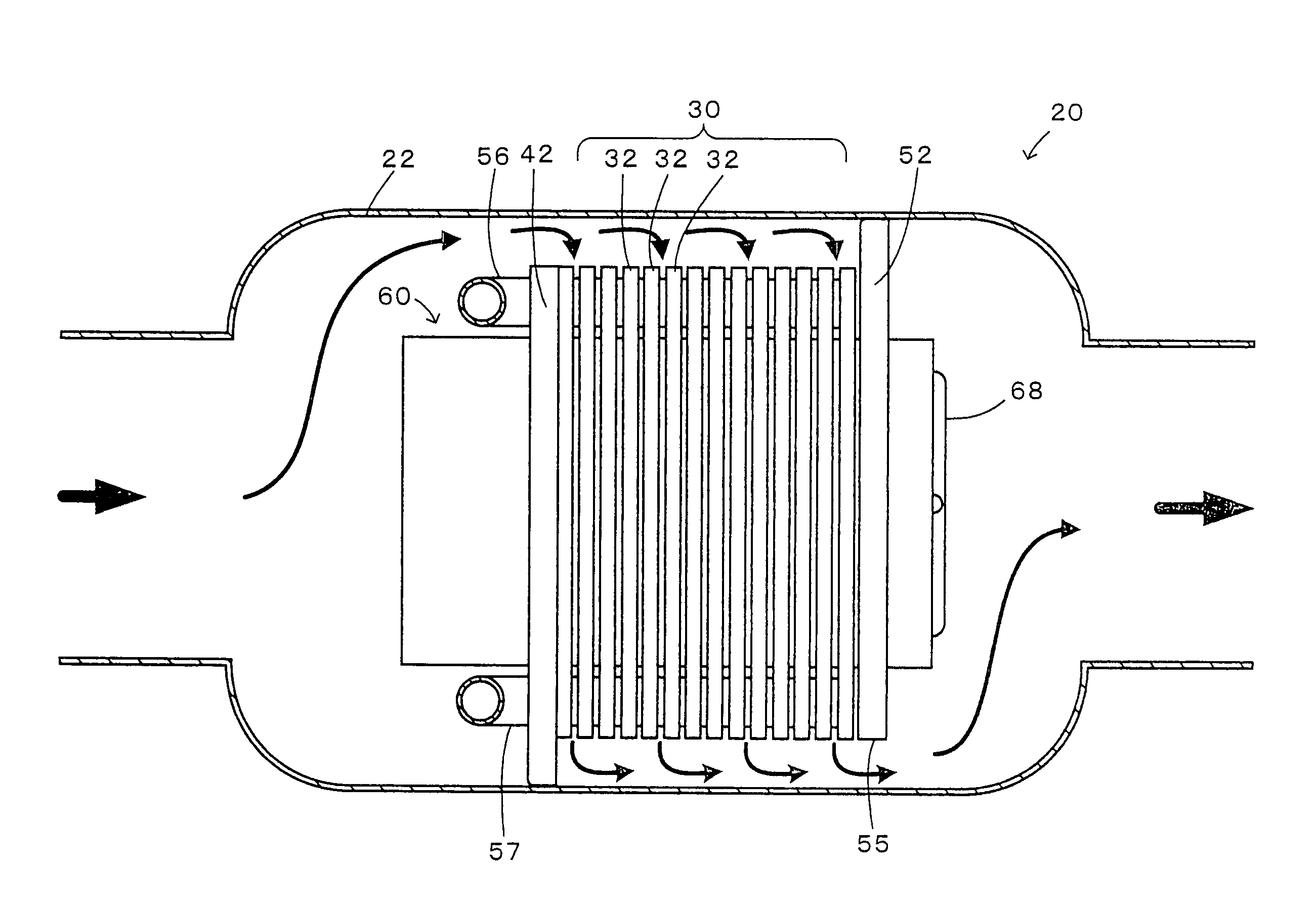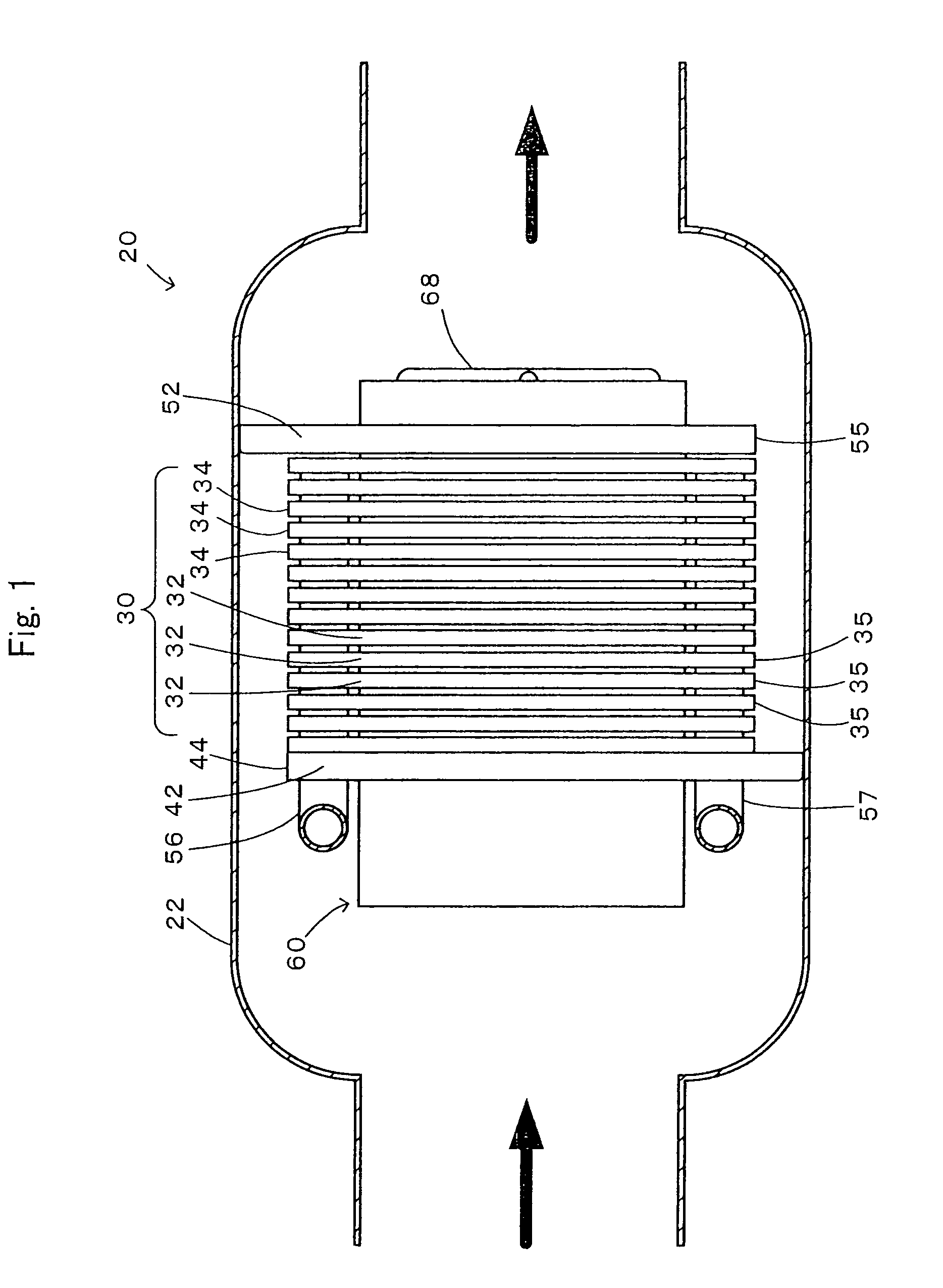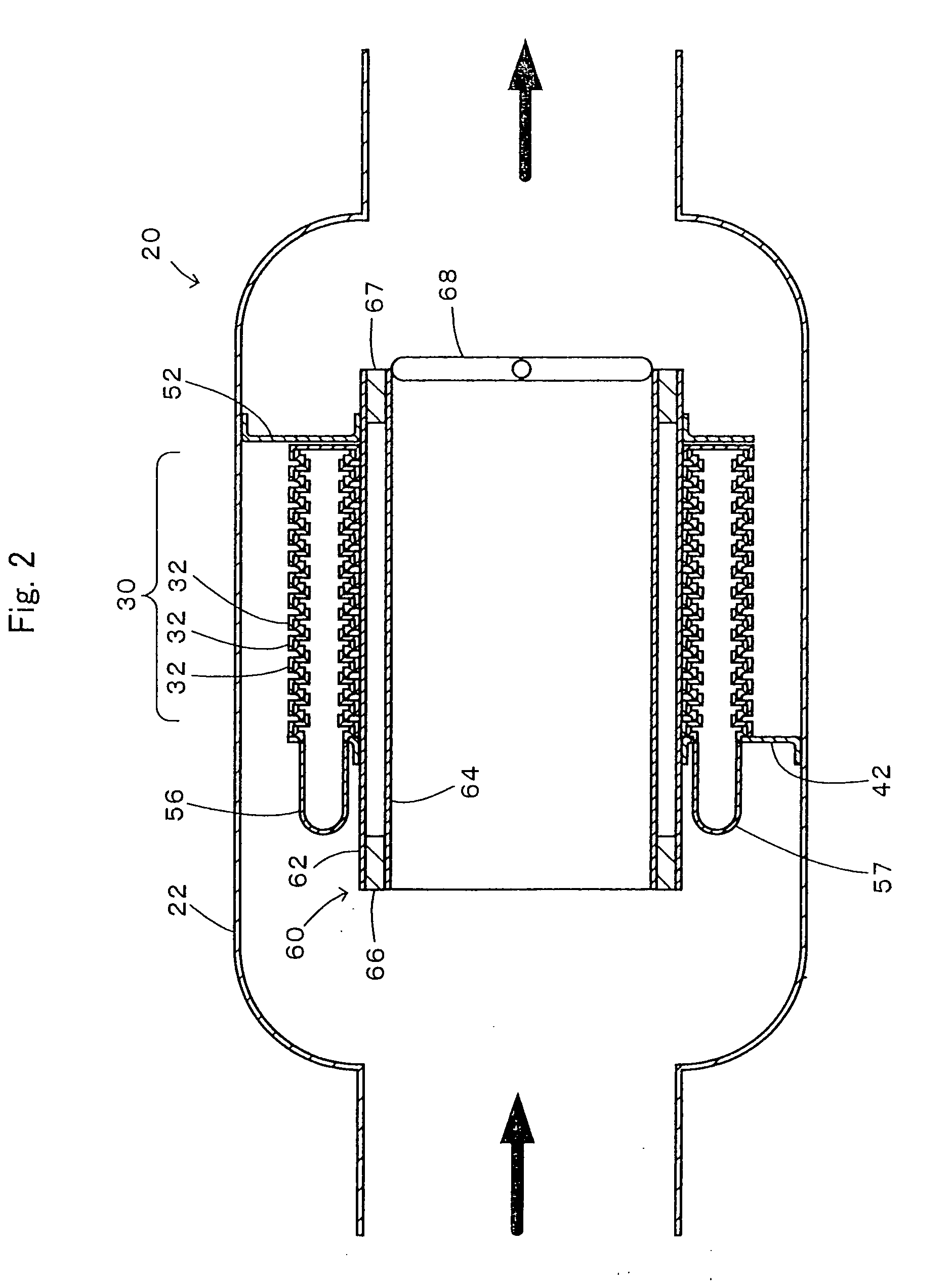Heat recovery system
a heat recovery and heat recovery technology, applied in the direction of heat exchange apparatus safety devices, machines/engines, light and heating apparatus, etc., can solve the problems of condensed emission, vaporization of liquid heat exchange medium, condensation of moisture or water content, etc., to improve heat recovery efficiency and reduce wall thickness
- Summary
- Abstract
- Description
- Claims
- Application Information
AI Technical Summary
Benefits of technology
Problems solved by technology
Method used
Image
Examples
Embodiment Construction
[0024]Some modes of carrying out the invention are described below with reference to the accompanied drawings. FIG. 1 is a diagrammatic representation of the general configuration of a heat recovery system 20 in accordance with one embodiment of the invention. FIG. 2 is a diagrammatic cross sectional view representation of the heat recovery system 20 of the embodiment. As illustrated, the heat recovery system 20 of the embodiment includes a casing 22 attached to an exhaust pipe of the internal combustion engine, a tube stack 30 created by stacking multiple donut-shaped, hollow flat tubes 32, an emission inflow-side end plate 42 attached to and bonded to one end flat tube 32 located on an emission inflow end of the tube stack 30 and fastened to the casing 22, an emission outflow-side end plate 52 arranged by a preset distance away from the other end flat tube 32 located on an emission outflow end of the tube stack 30 to be not in direct contact with the other end flat tube 32 and fas...
PUM
 Login to View More
Login to View More Abstract
Description
Claims
Application Information
 Login to View More
Login to View More - R&D
- Intellectual Property
- Life Sciences
- Materials
- Tech Scout
- Unparalleled Data Quality
- Higher Quality Content
- 60% Fewer Hallucinations
Browse by: Latest US Patents, China's latest patents, Technical Efficacy Thesaurus, Application Domain, Technology Topic, Popular Technical Reports.
© 2025 PatSnap. All rights reserved.Legal|Privacy policy|Modern Slavery Act Transparency Statement|Sitemap|About US| Contact US: help@patsnap.com



